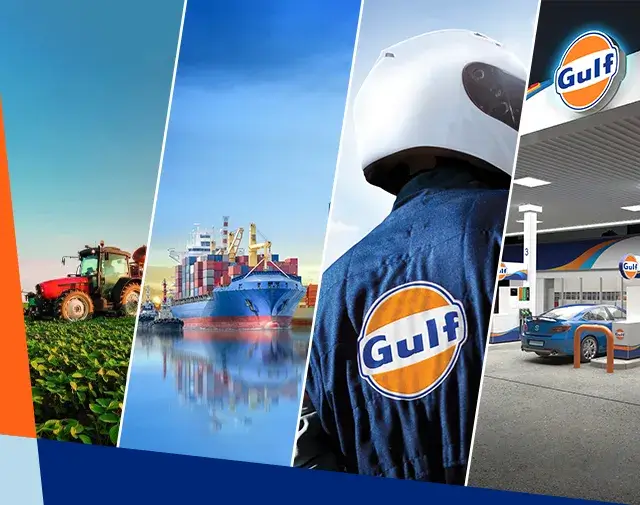How to Clean and Maintain Your Motorcycle Chain
27 Mar 2025
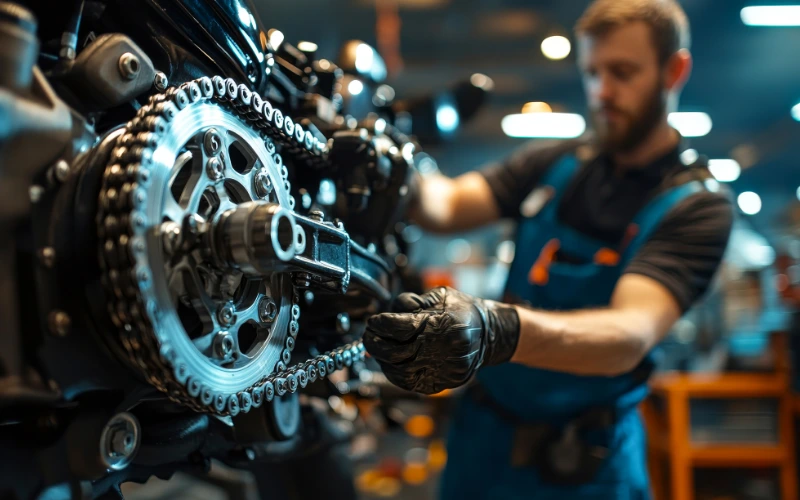
Whether you’re a new rider or a long-term enthusiast, knowing how to clean your motorcycle chain is crucial. Good motorcycle chain maintenance not only prolongs the life of your beloved bike, it also protects you from accidents caused by chain failure and boosts performance on the road.
When performed as part of your routine maintenance schedule, good motorcycle chain maintenance contributes to a smoother ride, while preventing excessive wear on parts that can be costly to replace.
In this article, we’ll cover four of the key tasks to consider, including chain inspections, cleaning, lubrication, and replacements.
Inspect your chain before every ride
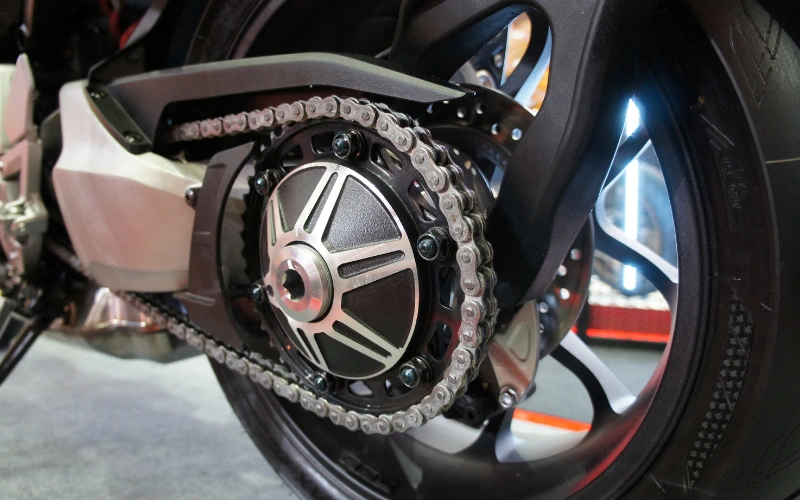
Giving your chain a quick once over before you hop on your bike ensures you spot any issues before they become accidents or cause long-term damage. It only takes a minute or two, but could save you a big repair bill.
What to look for
When giving your chain an inspection, there are a few key things to look out for:
- Check for slack or tight spots in the chain
- Look for signs of wear, rust, or damage, such as missing o-rings
- Check for kinks or excessive dirt build-up
- Examine the sprockets for sharp teeth or points that look like shark fins
Tools needed
You’ll only need basic inspection tools for this task, such as a flashlight or torch to check the chain slack.
When you pull the chain from the back of the rear sprocket, there should only be minimal movement. As soon as you can see chinks of light between the chain and the sprocket, it’s time to replace them.
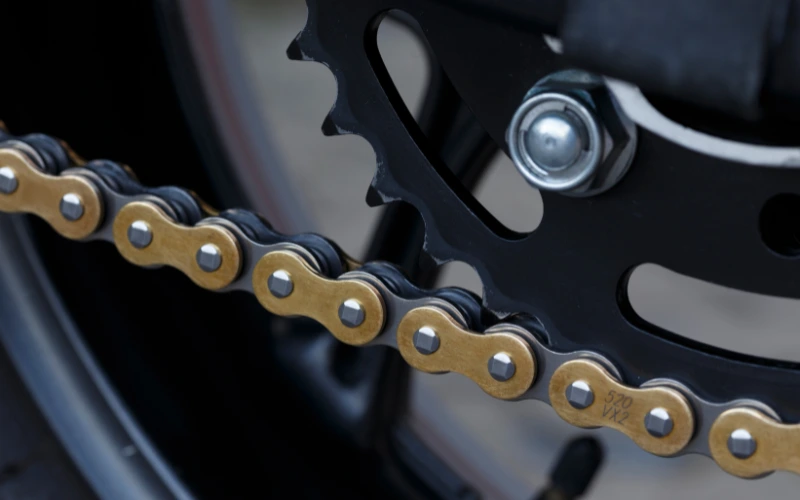
How to clean your motorcycle chain
Cleaning is one of the most important parts of motorcycle chain maintenance, preventing dirt, debris and lubricant buildup which can cause premature wear and damage. A clean chain leads to a smoother ride, better fuel efficiency, and less potential for accidents.
You should aim to clean your motorcycle chain every 500 -1000 miles or 805-1610km, depending on your typical riding conditions. If you tend to ride more in dusty, wet, or off-road conditions, you’ll need to clean it more frequently. You may even need to clean it after every ride in particularly muddy conditions.
Always check the manufacturer’s recommendations to see if your bike has any special chain cleaning requirements.
Tools and materials needed
You’ll only need a few basic tools to clean a motorcycle chain:
- Chain cleaner
- Stiff-bristle brush or chain cleaning tool
- Cloth or rags
Try to use equipment that is created specifically for motorcycle chain maintenance and avoid harsh chemicals or pressure washers that could damage seals or components.
Step-by-step cleaning process
Cleaning your motorcycle chain is a quick and simple process. It’s made easier if you have a centre or paddock stand that allows the rear wheel to spin freely.
If not, you can use a kickstand and clean the chain section by section, moving the bike each time to get access to the next section.
- Make sure the motorcycle is parked in a safe place and the engine is cool.
- Put on some protective gloves.
- Secure the motorcycle on a stand for easy chain access.
- Spray the chain with cleaner and let it sit to dissolve grime.
- Scrub the chain thoroughly using a brush or chain-cleaning tool.
- Give it a final spray with chain cleaner to get rid of any remaining dirt.
- Wipe off the residue with a clean cloth.
- If needed, manoeuvre the bike and repeat the process on the next section of the chain.
Lubricate your chain after you clean it
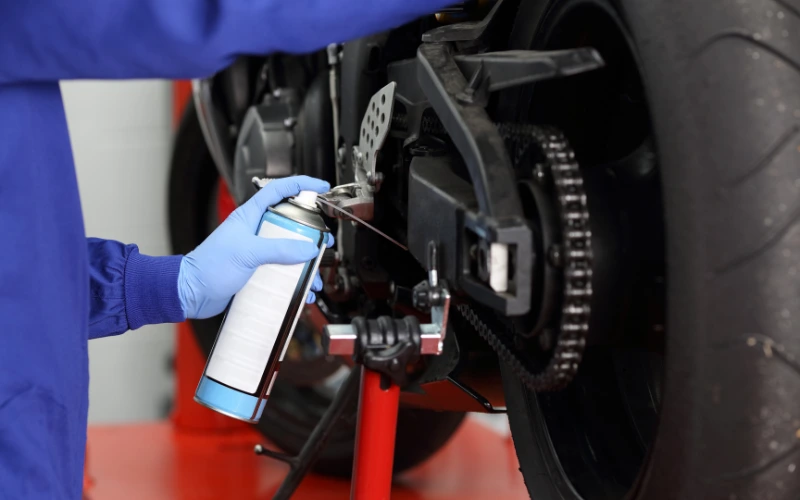
Every time you clean your chain, you should oil it at the same time. This is because cleaning can wash away some of the lubricant that is essential for reducing friction and ensuring a smooth power transfer.
You should also give your chain extra lubrication after riding in particularly wet, dusty or muddy conditions.
Make sure your chain is fully dry before you start, otherwise, the lubricant won’t adhere properly.
Choosing the right lubricant
There are lots of different types of chain lubricants but they broadly fall into two categories:
- Wax: As the name suggests, this is a motorcycle chain grease that forms a film over your chain to protect it. While more fiddly to apply, wax repels dirt and grime more effectively and lasts longer than oil.
- Chain oil: Typically sold in spray canisters, oil-based lubricant is quick and easy to apply. The long nozzle makes it easy to get to hard-to-reach areas of the chain, although oil can splash back onto other parts of the bike over time.
If you tend to ride in muddy areas or do a lot of off-roading, a motorcycle chain grease will be the preferable option. For mostly on-road riding, spray oil is a quick and simple solution.
How to apply lubricant properly
As with cleaning, lubing your motorcycle chain is a quick and painless process:
- Only ever apply lubricant to a clean and dry chain.
- Spin the rear wheel to expose the chain.
- Apply lubricant evenly on the inside of the chain for optimal penetration.
- Wipe off any dripping excess.
- Let the lubricant settle for a few minutes before riding to prevent fling-off.
Be careful not to overdo it, it’s far better to apply lubricant little and often to ensure a good level of protection at all times. Too much can fling off onto other parts of the bike causing dirt and grease build-up.
Replace your chain and sprockets when necessary
The final thing to think about with motorcycle chain maintenance is replacing the chain and sprockets when necessary.
You should always replace the chain and sprockets at the same time, even if one looks less worn than the other. This is because a worn chain on new sprockets or vice versa will cause the replacement part to wear out incredibly quickly.
Check your manufacturer’s instructions for how often to replace the chain and sprockets, but keep checking for signs of wear during each inspection. Signs you need a replacement include excessive rust, missing or damaged o-rings, chain elongation and excess slack, or worn sprocket teeth that look sharp or hooked like a shark’s fin.
How to choose replacements
As with any vehicle, you should use the manufacturer’s guidelines when choosing replacement parts. Your motorcycle may have certain specifications, so always check the handbook before purchasing.
Replacing the parts themselves is a complex process that typically requires the help of a mechanic. You can also consult an expert on the type of chain and sprockets you need, or get them to source it for you as part of the replacement service. This method offers the highest standards of safety and precision.
As you can see, motorcycle chain maintenance doesn’t have to be too complex, but making it a habit ensures a smoother, safer and more enjoyable riding experience.
For more details on the specific motorcycle chain maintenance recommendations for your bike, always consult your owner’s manual. Using high-performance lubricants built for your motorcycle is a great way to boost the benefits of your overall motorcycle maintenance schedule.

